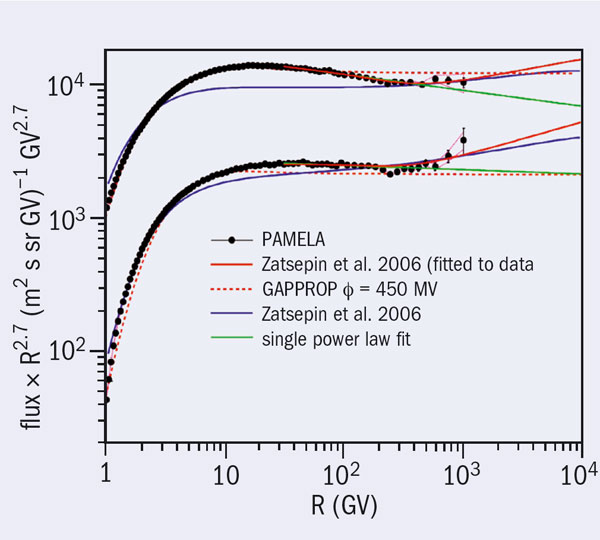
The satellite experiment Payload for Antimatter Matter Exploration and Light-nuclei Astrophysics (PAMELA) has reported finding differences between the shapes of the energy spectra of protons and helium nuclei in the cosmic radiation. The data thus seem to go against the generally accepted idea that cosmic rays gain their energy through acceleration in the remnants of supernovae, prior to diffusing through the Galaxy. The collaboration argues that more complex processes are needed to explain their observations.
PAMELA, which is run by a collaboration between several Italian institutes with additional participation from Germany, Russia and Sweden, went into space on a Russian satellite launched from the Baikonur cosmodrome in June 2006. The experiment consists of a magnetic spectrometer comprising a silicon tracker in a 0.48 T field produced by a permanent magnet, together with a time-of-flight system, an electromagnetic silicon-tungsten calorimeter, a “shower-tail catcher” scintillator and a neutron detector, all of which are shielded by an anticoincidence system. Its six-plane double-sided silicon micro-strip tracker provides information on absolute charge and track-deflection. The silicon-tungsten tracking calorimeter and the neutron detector are used in performing lepton–hadron discrimination.
The recent report is based on precision measurements of the proton and helium spectra in the rigidity range 1 GV–1.2 TV, which indicate that the spectral shapes of the two species are different and cannot be well described by a single power law. This challenges the conventional wisdom on the acceleration and propagation of cosmic rays. The data reveal a hardening in the spectra around 200 GV, which the collaboration says could be interpreted as an indication of different populations of cosmic-ray sources. One example of a multi-source model cited in the report published in Sciencexpress is that by V I Zatsepin and N V Sokolskaya (the blue curves in the figure), which considered novae stars and explosions in “superbubbles” as additional cosmic-ray sources.





